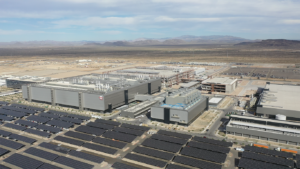Investors and analysts find great interest in the gold market’s notable rise at the beginning of 2024. Often regarded as a barometer of economic conditions and a hedge against uncertainty, the current gold price has skyrocketed in response to a convergence of world events. Here, we explore the main causes for this explosive increase by examining geopolitical, market-specific, and economic aspects and others.
Economic Unbalance and Concerns about Inflation
The general cause of the rising gold prices is the widespread economic uncertainty over several areas. As a result of the broad monetary policies carried out since 2020, several countries are struggling with continuous inflation. Price levels remain shockingly high even with interest rate increases meant to help lower inflation.
Under such conditions, gold starts to appeal. In past times, gold has been seen as a valuable store during inflationary times. Investors swarm gold to protect their money as inflation reduces the value of fiat currencies. Rising gold investments follow significant economies, including the United States and the European Union, which are seeing inflation rates above projections at the beginning of 2024.
Geopolitical Tensions and Safe-Haven Demand
Rising gold prices also contribute greatly to geopolitical uncertainty. At the beginning of 2024, many geopolitical hotspots aggravated world unrest. Unsolved Middle East conflicts, continuous tensions between big countries, and revived Eastern European hostilities have raised global risk perception.
Traditionally, gold has been considered a “safe-haven” asset in geopolitics. Gold’s security appeals to investors because it reduces the dangers connected to global unrest. The growing need for it has greatly influenced the price rise of gold as a preventive action against these uncertainties.
Policy Changes in Central Banks and Currency Variations
The currency market dynamics have also affected the upward path of gold prices. Usually inversely influencing gold prices, the US dollar has been erratic. The Federal Reserve’s relentless rate hikes helped the dollar strengthen much of 2023, but its impetus faded at the start of 2024. For holders of other currencies, a lesser dollar makes gold less expensive, increasing demand.
Central banks worldwide have also shown fresh enthusiasm for raising their gold stockpiles. Nations, including China and Russia, have been aggressively buying gold to diversify their reserves and lessen reliance on the US dollar. This deliberate change in central banks has greatly helped gold prices.
Market Analysis and Investment Patterns
Market speculations and patterns in investment behavior are also important. Investment trends have clearly changed at the beginning of 2024; more institutional investors and hedge funds are exposing gold to more exposure. Thanks to the development of gold-based financial products such as exchange-traded funds (ETFs), a wider spectrum of investors can now engage in the gold market.
Volatility and increasing pressure on gold prices have been exacerbated by speculative activity in the futures market, where contracts are bought and sold based on assumptions of future values. As analysts and market players forecast ongoing geopolitical and economic uncertainty, speculative gold investments have exploded.
Industrial and Technological Demand
Apart from conventional investing goals, technical developments and industrial demand for gold also influence matters. A consistent demand has resulted from gold’s growing application in technology, especially in the electronics and renewable energy industries. Demand is still driven by developments in electronics where gold’s exceptional conductivity and corrosion resistance rule.
Moreover, the increasing focus on sustainable energy sources, including gold-based solar panels meant to increase efficiency, has helped to sustain industry demand. Together with investment demand, this consistent industrial consumption has increased the upward pressure on gold prices.




